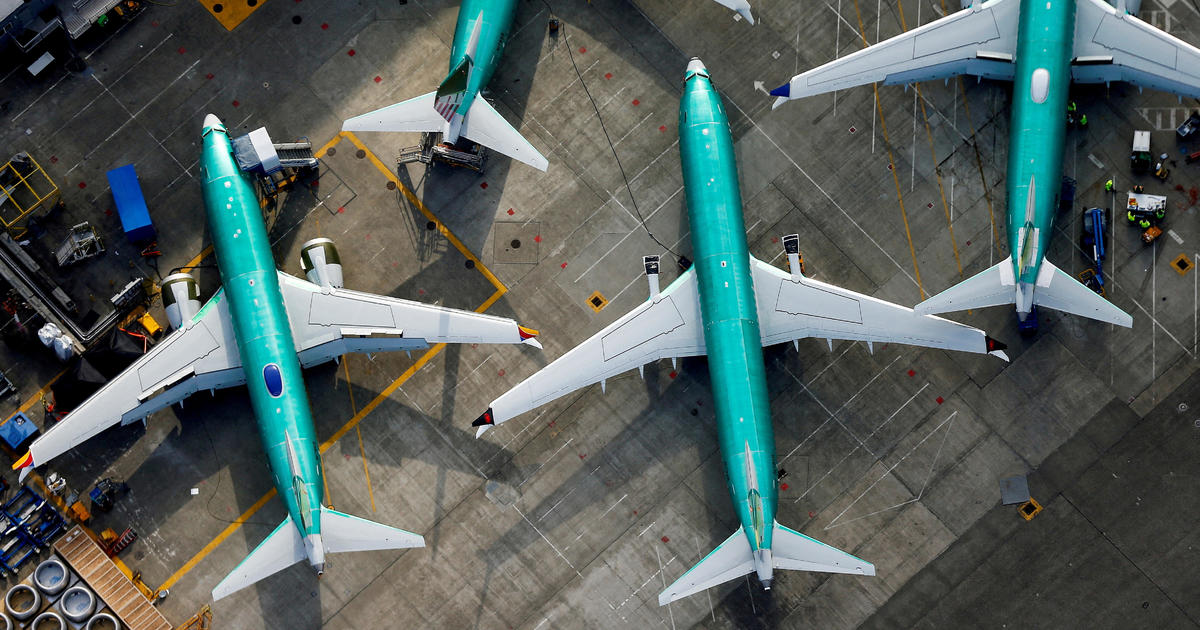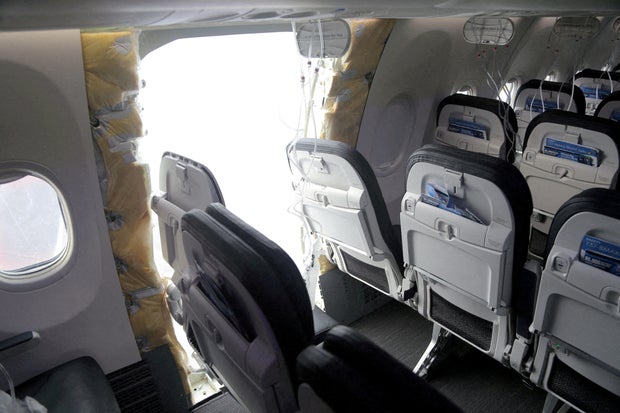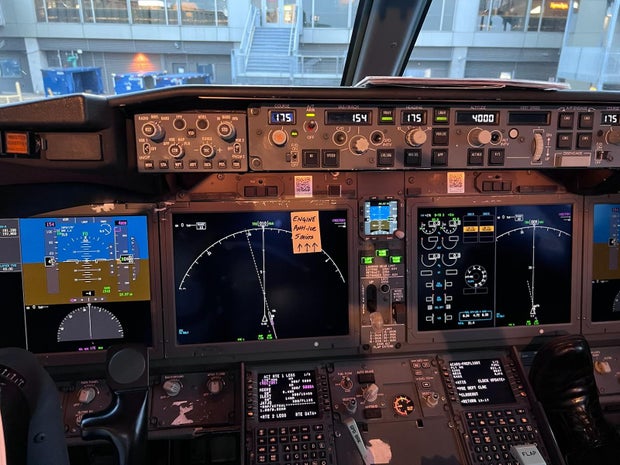Boeing told lawmakers its planned fix for an engine issue on all 737 Max jets will take up to a year, delaying certification of the 737 Max 7 and Max 10 airliners.
In written responses to questions from Sen. Tammy Duckworth, chair of the Senate Subcommittee on Aviation Safety, obtained exclusively by CBS News, Boeing says it has assembled a team of technical experts to “quickly drive forward a safe and complaint solution” to an issue that could cause the 737 Max engine anti-ice system to overheat and damage the engine.
Boeing officials had previously indicated they were aiming for a fix to be ready in nine to 12 months.
“For the safety of the flying public, I’m relieved that Boeing committed to fixing the known safety defect on-board its 737 MAX 10 before attempting to certify and put yet another flawed aircraft into commercial service. I’m also appreciative that Boeing took my concern with the MAX 7 to heart and agreed to prioritize fixing this safety defect in all MAX aircraft within the next year rather than its original 2026 timeline,” Duckworth said in a statement to CBS News. “When it comes to the safety of passengers and crew, this fix cannot come soon enough—and I will be closely monitoring Boeing’s efforts to ensure it stays on track to permanently address this safety defect and keep the flying public safe.”
Boeing received a waiver from the Federal Aviation Administration to continue operating the 737 Max 8 and 9 variants that are already certified and in service until a fix was developed and implemented in 2026. The company was seeking a similar waiver for the Max 7, which was nearing final FAA certification prior to a door panel blowing out of an Alaska Airlines flight midair in January.
NTSB/Handout via Reuters
Following demands from Duckworth that the FAA deny the Max 7 a safety waiver, Boeing withdrew the request. The company will not seek to fully certify the Max 7 or Max 10 until the issue is resolved.
The company told Duckworth the work to fix the anti-ice issue is complicated.
“Small changes made to the engine inlet can change the behavior of the air as it enters the engine, impacting engine performance. The solution selection process for the potential overheat issue will require a full understanding of safety and compliance impacts on all systems,” the company said.
On Tuesday, United Airlines CEO Scott Kirby said the Chicago-based carrier told Boeing to stop building the 737 Max 10 planes they have on order and instead focus producing 737 Max 9 planes.
“I think it’s impossible to say when the Max 10 is going to get certified,” Kirby said at a J.P. Morgan investor conference, “if and when the Max 10 gets certified, we’ll convert them back to Max 10s but Max 10 is out for us until it’s certified.”
Kirby acknowledged United is also weighing an order with rival Airbus for its A321neo aircraft. Any A321 order would likely lead to a corresponding order cancellation at Boeing.
“If we get a deal … to work, then we’ll do something, and if we don’t, then we won’t, and we’ll wind up having more Max 9s,” Kirby said.
Southwest Airlines is feeling the impact of the certification delays of the 737 Max 7. The airline announced this week it would have to cut its 2024 capacity plans and reevaluate its earnings expectations for the year because it will receive fewer Max deliveries this year than expected. Southwest flies an all-737 fleet and has hundreds of Max 7s on order.
Reuters/Mike Blake
In August 2023, the FAA issued an Airworthiness Directive, a regulation designed to address the issue on the Max 8 and 9 airplanes, that “was prompted by a report indicating that use of engine anti-ice (EAI) in dry air for more than five minutes during certain environmental and operational conditions can cause overheating of the engine inlet inner barrel beyond the material design limit, resulting in failure of the engine inlet inner barrel and severe engine inlet cowl damage.”
The FAA approved Boeing’s guidance to mitigate the problem on the existing fleet of Max aircraft while Boeing engineered a fix by May 2026. The FAA told airlines that pilots should limit the use of the anti-ice system to less than five minutes until Boeing’s fix was available.
While the issue has never occurred in-flight, Boeing determined it was theoretically possible under specific weather conditions, and in a worst-case scenario, could result in components breaking off.
Captain Dennis Tajer, spokesman for the Allied Pilots Association, the union representing American Airlines pilots, shared a photo of a Post-it note he uses as a reminder when flying a 737 Max about the temporary operating procedures for the anti-icing system.
Captain Dennis Tajer
The 737 Max 7 is the smallest of the four 737 Max variants, while the Max 10 is the largest. Boeing has a backlog of more than 4,000 737 Max jets.
Boeing’s 737 Max line has been at the center of multiple tragedies, scandals and close calls since being put into service.
Two 737 Max 8 crashes, one in 2018 and one in 2019, led to the entire fleet being grounded. Investigations determined those crashes, which killed a total of 346 people, were the result of false readings causing an automated system on the planes to pitch the noses of the aircrafts down.
The entire Max fleet was grounded for months following the second crash. All Max 9 aircraft in the U.S. were temporarily grounded a second time following January’s door panel incident.
Reuters/Lindsey Wasson





